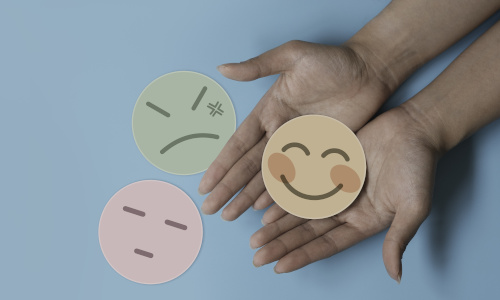The past year has taken a toll on students’ mental health. Rates of anxiety, depression, and stress are up and the CDC reports emergency room visits for adolescent suicide attempts have soared.
Teachers and school staff can play a critical role in addressing student mental health and supporting student wellbeing. But they can only help if they know what to watch for–and the warning signs aren’t always readily apparent.
Students often spend several hours a day online and often the first clues as to their feelings–good or bad–are found in their online communications with peers, their posts on social media and in chat rooms, and in their internet searches.
The terms they use when they’re discussing how they feel aren’t always obvious which makes it difficult for school staff to intervene and get them the help they need.
This list, from Impero Wellbeing’s keyword library, represents just some of the hundreds of terms that students commonly use when communicating to their peers or conducting online searches that could indicate concerns about mental health, eating disorders, violence against themselves or others, suicide and other issues:
- Lexapro (clinical depression/anxiety med)
- sanctioned suicide (Reddit thread)
- EHTILB (“blithe” backwards – when searching eating disorders)
- depression hurts
- anxiety symptoms
- #sophie #skip (used by those who suffer from schizophrenia)
- MIA/ANA (for anorexia/bulimia)
- Dallas
- Olive (OCD)
- want the pain to stop
- can’t sleep/trouble sleeping
- slef hram (common misspelling of “self harm”)
- Dutch Act (slang for thoughts of taking one’s life)
- Exit bag
- TOXBASE
- Take ur life
- #cutfor[celebrity name}
- CMW (cutting my wrists)
- secret_society123 (tag/search for eating disorders/self harm)
- where to hide scars/scar cover-up
Watching for and understanding what students are posting and searching for, and the slang they use — being able to “crack the code” so to speak — can go a long way toward uncovering potential mental health concerns. Here are some other strategies for teachers, administrators and school staff to help to support students’ mental health.
- Consider technology to help monitor what students are doing online. Systems can be set up to alert staff if students are searching or posting about weapons or violence, among other terms.
- Know the warning signs for mental health problems (becoming sad or withdrawn, severe mood swings, drastic changes in personality, etc.) and who at the school or district to report potential concerns to. Mentalhealth.gov provides several good examples of what to look forand how to help.
- Offer an anonymous reporting system for students to report any concerns they may have about themselves or another student.
- Provide students with access to resources. Mental Health America offers free online mental health screenings to help people identify potential mental health needs. It also has a downloadable Mental Health Month Toolkit with strategies to help people improve their own mental health and increase their resiliency.
- Evaluate your school or district’s mental health program. This may include making sure the school has a strong social and emotional learning program, enough school counselors, and partnerships with community organizations to provide access to mental health services and resources.
- Create a policy on suicide prevention. This model policy for administrators and policymakers created by the National Association of School Psychologists, American Foundation for Suicide Prevention, the American School Counselor Association, and the Trevor Project is a good place to start.
- Talk about it. Historically there has been a stigma when it comes to mental health. We can’t afford to keep this issue in the shadows. Schools should take steps to create safe spaces where students can talk about their feelings, their fears and their concerns. Being able to have open conversations about issues affecting one’s mental health is the first step in addressing it.
September is Suicide Prevention Awareness Month but it’s important to take these conversations and calls to action beyond the end of the month. Regardless of one’s role in the school — whether they’re a teacher, administrator, technology director or bus driver – everyone can be a part of the solution. Understand what to watch for and be proactive when you spot it. It could save a life.
If you or someone you know is in an emergency, call The National Suicide Prevention Lifeline at 800-273-TALK (8255) or call 911 immediately.
- 7 reasons to ditch recipe-style science labs - November 22, 2024
- As a paradeducator, here’s how I use tech to help neurodivergent students gain agency - November 22, 2024
- 5 ways school districts can create successful community partnerships - November 21, 2024


